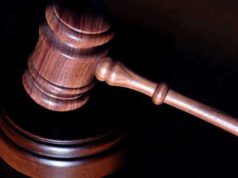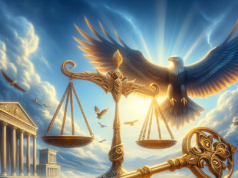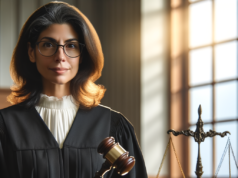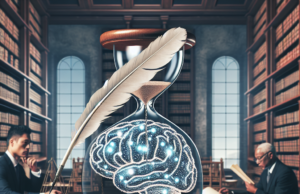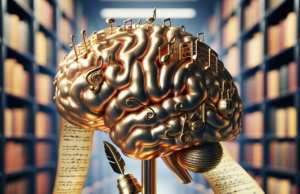Table of Contents

Article 3 of the United States Constitution: The Judicial Branch and Its Significance
Introduction
Article 3 of the United States Constitution is a critical piece of the country’s foundational document, outlining the establishment and powers of the judicial branch of the federal government. This article, which is relatively concise compared to some other sections of the Constitution, plays a pivotal role in the balance of power among the three branches of government. In this article, we will delve into the specifics of Article 3, examining its origins, provisions, and the profound impact it has had on American democracy. We will draw upon authoritative government resources to provide a comprehensive understanding of this crucial constitutional article.
I. Origins of Article 3
Article 3, along with the rest of the United States Constitution, emerged from the Constitutional Convention of 1787. The delegates to the convention convened in Philadelphia with the primary goal of revising the Articles of Confederation, which had proven inadequate in governing the new nation. During the course of the convention, it became apparent that a completely new constitution was necessary, and thus, Article 3, among others, was born.
A. The Federalist Papers
To gain insight into the thoughts and intentions of the framers of the Constitution, we can turn to “The Federalist Papers.” Authored primarily by Alexander Hamilton, James Madison, and John Jay, these papers provide a detailed explanation and defense of the proposed Constitution. Federalist No. 78, written by Alexander Hamilton, is particularly relevant to Article 3. In this essay, Hamilton elaborated on the role of the judiciary and the necessity of an independent and impartial judicial branch. He argued that the judiciary was essential to protect the rights of individuals and the Constitution itself, emphasizing the principle of judicial review, which allows the courts to declare laws unconstitutional.
Hamilton wrote, “The complete independence of the courts of justice is peculiarly essential in a limited Constitution,” highlighting the critical role of the judiciary in interpreting the Constitution and ensuring that the other branches of government adhere to its principles.
B. The Constitutional Convention
During the Constitutional Convention, Article 3 was debated and refined. The framers recognized the need for a separate and coequal branch of government dedicated to interpreting and applying the law. The judicial branch’s establishment through Article 3 was, in part, a response to the weaknesses of the Articles of Confederation, which lacked a centralized judiciary.
II. Provisions of Article 3
Article 3 of the Constitution is divided into three sections, each outlining different aspects of the judicial branch.
A. Section 1: The Establishment of the Judicial Branch
Section 1 of Article 3 establishes the judicial branch of the federal government. It reads:
“The judicial Power of the United States shall be vested in one supreme Court, and in such inferior Courts as the Congress may from time to time ordain and establish.”
This section lays the groundwork for the federal court system, consisting of the Supreme Court and lower federal courts, while giving Congress the authority to create and organize these courts.
B. Section 2: Jurisdiction of Federal Courts
Section 2 of Article 3 outlines the jurisdiction, or the legal authority, of federal courts. It is a pivotal section with several key provisions:
1. The Original Jurisdiction Clause: Section 2 specifies the types of cases over which the Supreme Court has original jurisdiction, meaning they can be filed directly with the Court. These include cases affecting ambassadors, public ministers, and disputes between states. All other cases fall under the Court’s appellate jurisdiction, which means they must first go through lower federal courts or state courts before reaching the Supreme Court.
2. The Treason Clause: This clause defines treason as levying war against the United States or adhering to its enemies, providing a clear definition of this serious offense.
3. The Trial by Jury Clause: Section 2 guarantees the right to trial by jury in criminal cases, emphasizing the importance of due process and fair trials.
4. The Limitation on State Court Jurisdiction: This section limits the jurisdiction of state courts in certain federal cases, ensuring that disputes involving federal law and the Constitution can be resolved in federal courts.
C. Section 3: Treason
Section 3 of Article 3 defines the crime of treason against the United States. It reads:
“Treason against the United States, shall consist only in levying War against them, or in adhering to their Enemies, giving them Aid and Comfort. No Person shall be convicted of Treason unless on the Testimony of two Witnesses to the same overt Act, or on Confession in open Court.”
This section establishes a high bar for proving treason, requiring either the testimony of two witnesses to the same overt act or a confession in open court. The framers deliberately set a rigorous standard to prevent the misuse of treason charges for political purposes.
III. The Significance of Article 3
Article 3 of the United States Constitution holds immense significance in the American system of government. Its provisions have profound implications for the balance of power, the protection of individual rights, and the functioning of the federal judiciary.
A. Separation of Powers
Article 3 plays a central role in the separation of powers, a fundamental principle of the U.S. government. The framers designed the Constitution to divide governmental authority among three separate branches: the legislative, the executive, and the judicial. Article 3 is the cornerstone of the judicial branch, ensuring its independence and autonomy. The establishment of federal courts with lifetime appointments for judges insulates the judiciary from political pressures, allowing it to interpret the law impartially.
B. Checks and Balances
Article 3 contributes to the system of checks and balances, another core principle of the U.S. government. The judiciary, as established in this article, has the power of judicial review, which means it can review and invalidate laws passed by Congress or actions taken by the executive branch if they are found to be unconstitutional. This authority ensures that no single branch of government becomes too powerful and that the Constitution remains the supreme law of the land.
C. Protection of Individual Rights
One of the primary roles of the judicial branch, as articulated in Article 3, is the protection of individual rights and liberties. Federal courts, particularly the Supreme Court, have played a pivotal role in interpreting and expanding upon the rights enshrined in the Constitution. Landmark decisions, such as Brown v. Board of Education and Roe v. Wade, have shaped American society and advanced civil rights and liberties.
D. Constitutional Interpretation
Article 3 grants federal courts the authority to interpret the Constitution. This power is central to the ongoing evolution of constitutional law in the United States. The Supreme Court’s interpretations of the Constitution have a lasting impact on American jurisprudence and society as a whole. The Court’s decisions often settle contentious issues, clarify legal principles, and guide future legislation.
E. Protection Against Tyranny
The framers of the Constitution were deeply concerned about the potential for tyranny and the abuse of power. Article 3 serves as a safeguard against tyranny by providing an independent branch of government capable of challenging the actions of the other branches. The judiciary can serve as a check on executive overreach or legislative overreach, ensuring that the rule of law prevails.
IV. The Evolution of Article 3
Article 3 has evolved over the years through amendments to the Constitution, legislative actions, and Supreme Court decisions. While the basic framework and principles outlined in Article 3 have remained largely unchanged, the judiciary’s role and responsibilities have adapted to the changing needs of the nation.
A. The Judiciary
Act of 1789
The Judiciary Act of 1789, passed by the first Congress and signed into law by President George Washington, played a crucial role in implementing Article 3. This landmark legislation established the federal court system, including the Supreme Court and the lower federal courts. It also clarified the Court’s jurisdiction and procedures, setting the stage for the federal judiciary’s functioning.
B. Marbury v. Madison (1803)
The case of Marbury v. Madison is perhaps the most significant Supreme Court decision in U.S. history, as it firmly established the principle of judicial review. Chief Justice John Marshall, writing for the Court, declared that it was the duty of the judiciary to interpret the Constitution and determine the constitutionality of laws. This decision reaffirmed the judiciary’s role as a coequal branch with the power to check the other branches.
C. Expanding Civil Rights and Liberties
Throughout American history, the federal judiciary, guided by Article 3, has played a pivotal role in expanding civil rights and liberties. Landmark cases, such as Dred Scott v. Sandford, Plessy v. Ferguson, and Brown v. Board of Education, have addressed issues of slavery, segregation, and racial equality. These decisions have reshaped the social and legal landscape of the United States.
D. Contemporary Issues
Article 3 continues to be relevant in addressing contemporary legal and constitutional challenges. The Supreme Court regularly hears cases related to topics such as abortion rights, gun control, LGBTQ+ rights, and executive authority. These cases reflect the enduring importance of Article 3 in shaping American law and society.
V. Challenges and Controversies
Article 3 and the federal judiciary are not without their share of challenges and controversies. The appointment and confirmation of federal judges, particularly Supreme Court justices, have become highly politicized processes. Presidents nominate judges with their own ideological leanings, and the Senate’s role in confirming these nominations has often been contentious.
A. Judicial Appointments
The process of nominating and confirming federal judges, including Supreme Court justices, has become highly partisan in recent decades. Presidents select nominees who align with their political ideologies, and the Senate confirmation process has become a battleground for political interests. This has led to contentious and often divisive confirmation battles, as seen in the confirmations of Justices Brett Kavanaugh and Amy Coney Barrett.
B. Ideological Divisions
The Supreme Court, as the highest court in the land, often finds itself at the center of ideological debates. The Court’s decisions on issues like abortion, affirmative action, and religious freedom have deep and lasting implications for American society. These decisions can also have a significant impact on the Court’s public perception and the perception of its impartiality.
C. Expanding or Limiting Jurisdiction
Over the years, there have been debates about whether the jurisdiction of federal courts, as outlined in Article 3, should be expanded or limited. Some argue for broader federal jurisdiction to address pressing national issues, while others advocate for stricter limits to preserve the authority of state courts. These debates highlight the ongoing tension between federal and state authority.
VI. Conclusion
Article 3 of the United States Constitution, despite its brevity, plays a pivotal role in the nation’s governance. It establishes the federal judiciary, defines its jurisdiction, and empowers it to interpret and uphold the Constitution. The framers of the Constitution, mindful of the need for a system of checks and balances and the protection of individual rights, designed Article 3 to be a cornerstone of American democracy.
Throughout its history, the federal judiciary has faced numerous challenges and controversies, from the politicization of judicial appointments to divisive ideological debates. However, the principles articulated in Article 3 remain as relevant today as they were in 1787. The federal judiciary continues to serve as a safeguard against tyranny, a protector of individual rights, and a guardian of the Constitution.
As the United States confronts new legal and constitutional challenges in the 21st century, Article 3 will continue to guide the role and responsibilities of the federal judiciary, ensuring that the principles of justice, fairness, and the rule of law endure for generations to come.
Article 3 Overview
The United States Constitution is the supreme law of the land and is the foundation upon which the country is built. It outlines the structure of the federal government, lists the powers and limitations of each branch, and establishes the rights and liberties of the American people. Within this document, there are a number of articles that specifically detail the various aspects of government operations. One of the most significant of these is Article III.
Article III lays out the principles that govern the judiciary branch of the federal government. The article sets forth the basic structure of the court system that exists in the United States and details the powers and responsibilities of judges operating within the federal system.
The first section of Article III creates a system of courts that is separate from both the legislative and executive branches of government. It establishes the Supreme Court as the highest court in the country and also allows for the creation of lower federal courts. The jurisdiction of these courts is specified in the article and includes the power to hear cases involving federal law, cases between different states, and cases in which the federal government is a party.
The second section of Article III outlines the power of the judiciary over cases and controversies that come before it. This section specifies that the courts will have the authority to resolve disputes using an adversarial process that allows both sides to present evidence and make arguments. It also provides judges with a degree of independence from the other branches of government, making them less susceptible to political influence.
The third section of Article III sets the standard for defining treason and establishes the requirements for convicting someone of this crime. It specifies that a person can only be found guilty of treason if they have committed an overt act of war against the United States or have provided aid and comfort to enemies of the country. The article also establishes the requirement of two witnesses to a treasonous act or a confession in open court before a conviction can be handed down.
The influence of Article III can be seen in the shaping of the American legal system over time. The article is considered to be the document that laid the foundation for the federal court system and established the principles of separation of powers and checks and balances between the branches of government. The structure of the court system has since been expanded, with the creation of a number of lower federal courts, and it has become a key component of the legal system in the United States.
In addition to serving as the basis for the federal court system, Article III has also influenced the legal systems of individual states. Article VI of the Constitution specifies that federal law is the supreme law of the land and that state laws must comply with it. This means that the principles of Article III are incorporated into the legal frameworks of each state, with state courts often looking to federal precedent when making decisions on cases that involve federal law.
The principles outlined in Article III have also influenced future laws and court cases in the United States. One example of this can be seen in the case of Marbury v. Madison. This landmark case, decided in 1803, established the principle of judicial review and gave the Supreme Court the power to declare laws passed by Congress or actions taken by the executive branch to be unconstitutional. The decision was based on the principles set forth in Article III, which established the judiciary as an independent branch of government with the power to review and interpret the law.
Another example of the influence of Article III can be seen in the development of the civil rights movement. As cases involving discrimination in education, voting, and housing began to make their way through the court system in the mid-20th century, the Supreme Court’s interpretation of Article III helped establish the civil rights protections that are now a cornerstone of American law. This includes landmark decisions such as Brown v. Board of Education, which declared segregation unconstitutional, and Loving v. Virginia, which overturned laws prohibiting interracial marriage.
In summary, Article III of the United States Constitution is a crucial document that has had a profound impact on the country’s legal system. Its creation of an independent judiciary, the specification of the powers and jurisdiction of federal courts, and its influence on future laws and court decisions have all contributed to the development of a robust and effective legal system in the United States. As such, it remains a cornerstone of American democracy and is a testament to the foresight and dedication of the founders of the country.
What is Article 3 of the Constitution?
Article 3 of the United States Constitution is the section that creates the judicial branch in the United States. The Judicial branch is the system of courts that look at the law and applies it to different cases. In the United States, the judicial branch of the federal government includes the United States Supreme Court and all the lower courts that are created by Congress
How is Article 3 Broken Down?
Article 3 of the United States Constitution is broken down into just three sections. Each of these sections looks at different parts of the court system in the United States.
Section 1 of Article 3 of the Constitution
Section 1 of Article 3 of the Constitution creates the federal courts in the United States. In this part of Article 3, it says that the federal court system must have one Supreme Court. In this Supreme Court, there must be a Chief Justice who presides over the court. While Section 1 of Article 3 does not say how many justices there must be, the current law says that there must be nine justices, one of them being the Chief Justice.
Article 3 does not say there have to be any lower courts. Instead, Congress is given the power to create and remove lower courts. Section 1 of Article 3 also says that judges can hold their offices for the rest of their lives or until they are convicted or impeached by Congress. The last part of Section 1 of Article 3 says that a judge’s pay cannot be decreased while they are in office, but it can be increased.
Section 2 of Article 3 of the Constitution
Section 2 of Article 3 of the Constitution talks about the powers of the judicial branch and explains who gets each power. This describes which cases a court can preside over and what topics those cases can be about. Section 2 of Article 3 states that the Supreme Court has the right to hear any case for the first time, meaning that the Supreme Court has original jurisdiction. This section also says that crimes have to be tried by a jury unless the defendant does not want one.
Section 3 of Article 3 of the Constitution
Section 3 of Article 3 of the Constitution only talks about treason. This part of Article 3 says that treason is when someone tries to attack or wage war against the United States or if he or she tries to help enemies do so in some way. In order to prove that someone committed treason, there must be at least two different witnesses to the act, or the person must confess to treason.








